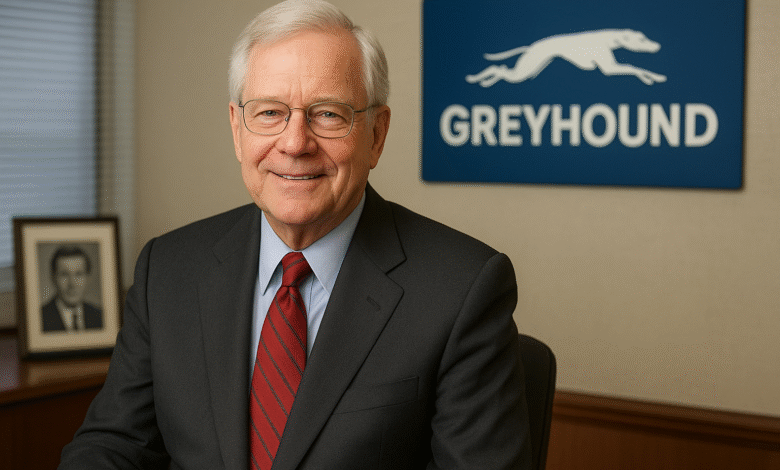John Teets Net Worth: Life, Career, and Enduring Legacy

Who Was John Teets?
John W. Teets was a prominent American business leader celebrated for turning Greyhound Corporation into a diversified, highly profitable conglomerate. Born in 1931, Teets carved a significant place in corporate history through his innovative vision, sharp business instincts, and dedication to transformative growth. His leadership strategies are still studied today as examples of corporate reinvention done right.
Why Does John Teets Remain Influential Today?
More than a decade after his passing in 2011, John Teets remains a subject of interest among business professionals, historians, and scholars. The discussion surrounding John Teets Net Worth extends beyond dollar figures — it encompasses the value he created, the industries he reshaped, and the long-term impact of his leadership.
The Career That Built His Wealth
Early Beginnings
Teets started in advertising and marketing, gaining valuable experience with companies such as the Chicago Tribune and Seeburg Corporation. These early roles honed his skills in branding and consumer engagement, which later became critical tools in his corporate success.
Joining Greyhound and Rising to the Top
In 1963, Teets joined Armour and Company, which later became part of Greyhound Corporation. By 1981, he had climbed to the position of Chairman and CEO, with a clear mission — to transform Greyhound from a traditional bus company into a robust, multi-industry conglomerate.
The Transformation of Greyhound
From Bus Lines to Billion-Dollar Diversification
At the start of his leadership, Greyhound’s primary focus was transportation. Teets saw the risk in relying on a single revenue stream and initiated a diversification strategy that expanded the company into:
-
Food services (through Armour-Dial)
-
Consumer products (notably Dial soap)
-
Financial services
-
Hospitality and travel ventures
His bold approach significantly increased both Greyhound’s revenue and market value.
The Strategic Spin-Off
One of Teets’ landmark moves was spinning off the Greyhound bus lines in 1987, allowing the company to focus more on profitable sectors like consumer goods. This decision led to the creation of The Dial Corp, which became a household name in America.
John Teets Net Worth — The Financial Picture
Estimating His Wealth
Exact figures on John Teets Net Worth are unavailable due to limited public disclosures. However, based on his executive salary, stock holdings, and investments, analysts estimate his peak net worth to have been between $30 million and $50 million.
Key Sources of His Wealth
-
Executive Compensation – During his peak years as CEO and Chairman, Teets likely earned between $1 million and $3 million annually in salary, bonuses, and other incentives.
-
Stock Ownership – Teets held significant shares in The Dial Corp, which appreciated greatly under his leadership.
-
Real Estate and Investments – Like many high-level executives, Teets owned prime real estate and invested in private ventures.
Business Lessons from John Teets
-
Diversify to Thrive – His transformation of Greyhound into a diversified business empire is a blueprint for reducing corporate risk.
-
Branding Is a Weapon – With his advertising background, Teets elevated Dial’s brand visibility, creating marketing campaigns that made the brand a household staple.
-
Lead with People in Mind – Teets prioritized employee growth and community engagement, blending profitability with corporate responsibility.
The Dial Corp: A Lasting Brand Legacy
Under Teets’ guidance, Dial became a leader in hygiene and personal care products. The company’s portfolio included soaps, deodorants, and household cleaners that dominated store shelves. He also expanded into new markets through strategic partnerships and acquisitions, securing a strong position in both domestic and international markets.
Retirement and Later Years
Teets retired in 1997 but continued serving on corporate boards and engaging in philanthropy. His donations supported hospitals, educational institutions, and community organizations, particularly in Arizona.
He was also recognized for his business achievements, receiving honors such as:
-
Executive of the Year – Financial World Magazine
-
Induction into the Arizona Business Hall of Fame
-
Outstanding Corporate Citizen – Chamber of Commerce
Controversies and Criticism
Despite his successes, Teets faced criticism over labor union disputes during Greyhound’s restructuring and environmental concerns tied to corporate operations of the era. Still, these issues were reflective of industry-wide practices at the time rather than personal failings.
Comparing Teets to Other Industry Titans
| Business Leader | Peak Net Worth Estimate | Known For |
|---|---|---|
| John Teets | $30–50 million | Greyhound & Dial Corp transformation |
| Jack Welch | $720 million | GE leadership |
| Lee Iacocca | $100–200 million | Chrysler revival |
| Steve Jobs | $10 billion | Apple & Pixar |
While John Teets Net Worth wasn’t the highest among his peers, his influence and strategic impact placed him in the same league as some of the most celebrated business leaders.
Legacy and Final Years
John Teets passed away in 2011, leaving behind a blueprint for corporate transformation that is still studied in business schools. His story illustrates that wealth is only one measure of success — vision, innovation, and leadership leave a far greater mark.
Conclusion
Exploring John Teets Net Worth offers a look into more than just financial success. His career was a masterclass in diversification, brand building, and people-focused leadership. Through strategic thinking and fearless decision-making, he transformed Greyhound and left an enduring legacy that continues to inspire corporate leaders.
FAQs
1. What was John Teets Net Worth at his peak?
Estimates suggest between $30 million and $50 million during the height of his career.
2. Which companies did John Teets lead?
He worked with Seeburg Corporation, Armour and Company, Greyhound Corporation, and The Dial Corp.
3. What was his most notable business move?
Spinning off the Greyhound bus lines in 1987 to focus on consumer goods through The Dial Corp.
4. Was John Teets involved in philanthropy?
Yes, he actively supported education, healthcare, and community initiatives.
5. Are his strategies studied in business schools?
Yes, his diversification and turnaround approaches remain relevant in modern business studies.



